
| Tikal Scientific Information Center | Tikal's Meteorological Information | Tikal's Hydrology | Tikal's Ecology | Tikal's Flora | Tikal's Fauna |
| Tikal's Mammals | Tikal's Felines | Tikal's Bats | Tikal's Birds | Tikal's Insects | Tikal's Reptiles | Tikal's Amphibians |
| Tough to Spot |
Tough to Spot: Resident Bird Species at the Tikal National Park in Guatemala
The Anhinga- water turkey
Order: Suliformes
Family: Anhingidae
Species: Anhinga anhinga
The anhinga is probably the aquatic and fishing bird you can see at the Tikal "aguadas" or waterholes. It swims under water until it sights its prey. It usually feeds on small fish or frogs and it is sometimes called a “Snake Bird” because in its habit of swimming, it submerges its body and only its head and neck are gliding sinuously along the water’s surface. Its eyes are red and its bill yellow to yellow-orange dusky culmen and tip better characterize the anhinga. The bare facial skin is bluish and its feet are yellow-olive. It is black overall with green gloss. It lives in lakes, marshes, slow-moving rivers, and mangroves. It flies with an extended neck, and its deep wing beats are interspersed with glides; often soars, wings held flattish. Migrates in flocks, soaring on thermals, at times mixing loosely with hawks.
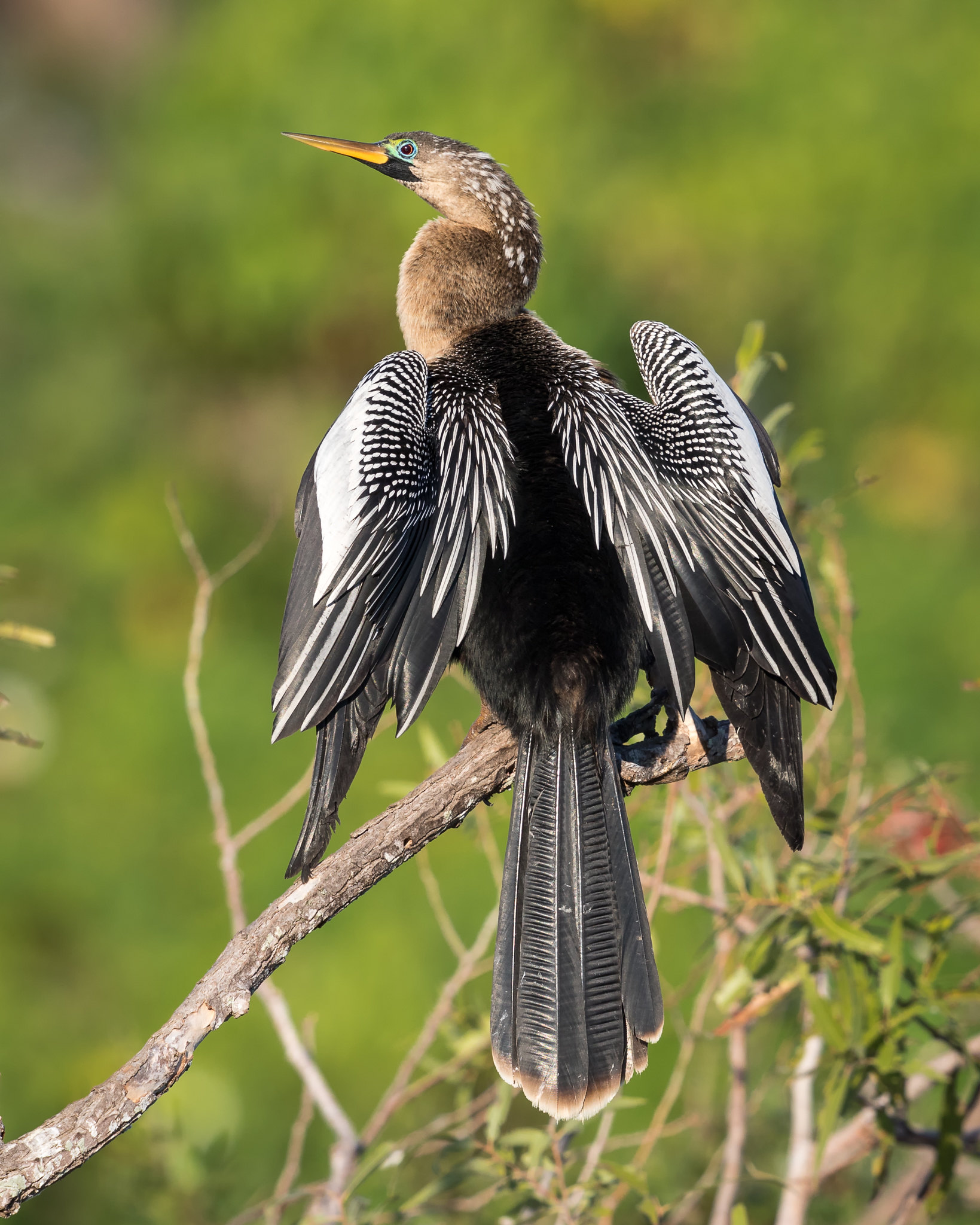
Northern Jacana or Northern Jaçana
Order: Charadriiformes
Family: Jacanidae
Species: Jacana spinosa
The jacana has such large feet with the toes spread so wide, it can almost walk on water, although it does need a waterlily "pad" or two. This delicate bird can be seen as it wades about foraging in the Aguada. An interesting fact about the jacana is that the male sits on the nest while the female brings home the “groceries”. When the Jacana alights for a flight, its wings are extended straight up in the air and are held that way for a few seconds. The underside of the wing is bright yellow and its display is very conspicuous.
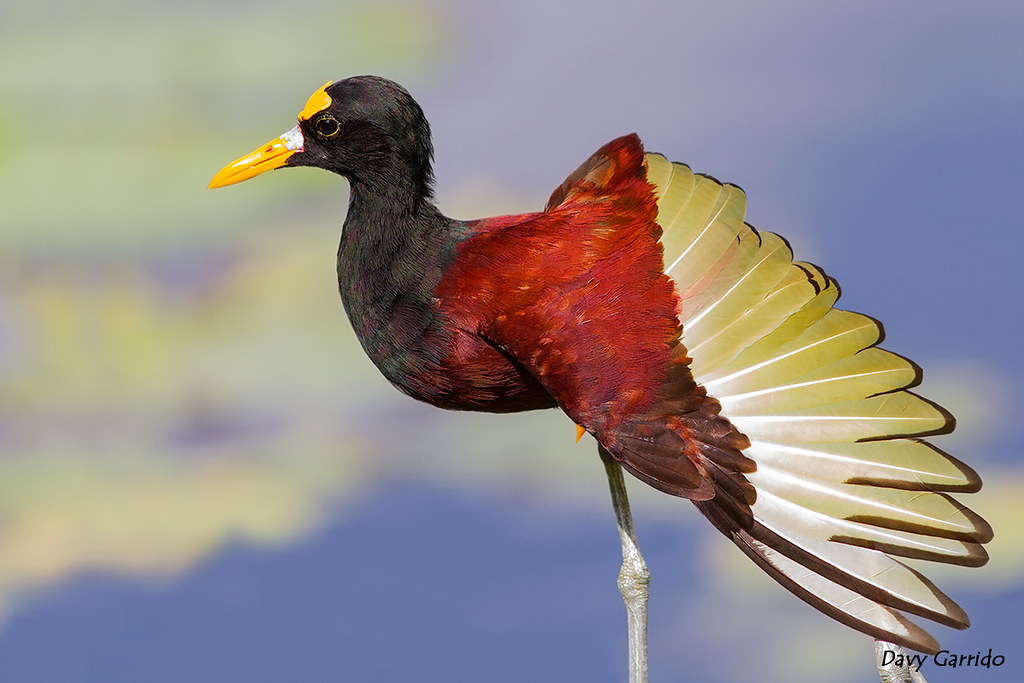
The Orange Breasted Falcon
Order: Falconiformes
Family: Falconidae
Species: Falco deiroleucus
Tikal is one of the finest places in which to observe this bird. This falcon has a white throat, the sides of its neck are washed cinnamon, its belly is black with coarse whitish and cinnamon bars and spots. It has a bright orange breast. Although slightly smaller, this falcon closely resembles the much more widely distributed peregrine falcon. Its voice is a hard, often insistent screaming “kyowh-kyowh-kyowh”… it may suggest a rapid Brown Jay screaming but more clipped. Also, if it is single it emits more barking screams. Its habitat is humid evergreen forest, edges and clearings especially near cliffs. It perches conspicuously on tall dead snags. Its flight is fast and powerful, recalling the Peregrine; they are small to fairly large raptors with long, pointed wings and longish tails. It nests in cavities in cliff faces.
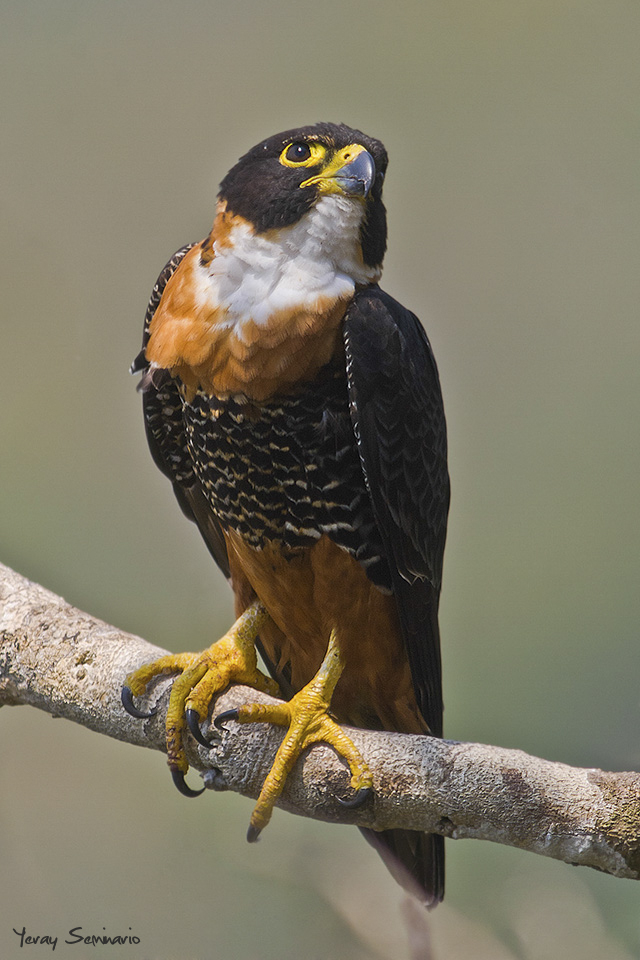
Boat Billed Heron or The boatbill
Order: Pelecaniformes
Family: Ardeidae
Species: Cochlearius cochlearius
A large bird, never found far from water, the Boat-Billed Heron is colored black above and white below. A look at the bill, that can be four inches long and nearly as wide, accounts for its name. Looking carefully among the trees that line the Tikal "aguadas" or water reservoirs sometimes reveals one of these unique herons. Its nests are platforms of vegetation, often sticks; its eggs are bluish white, faintly speckled cinnamon. They live in mangroves, freshwater marshes, and riverside trees. It is strictly nocturnal, more so than night herons, unlikely seen during the day away from roosts or colonies. They are solitary feeders at night; the function of its bill still is not fully understood. Boat Billed Herons fly with their necks retracted in a deep neck bulge, its legs projecting beyond the tail. It feeds on varied food, mostly eating fish and sometimes their diet includes amphibians, reptiles, crustaceans, insects, small mammals, and nesting birds.

Photo by Dustin Murray
Limpkin or Crying bird
Order: Gruiformes
Family: Aramidae
Species: Aramus guarauna
They are under protection at the Tikal National Park. The Limpkin has become a more frequent visitor at the "aguadas" or water reservoirs at Tikal, or water holes. It is a large, superficially ibis-like New World bird with a long slightly decurved bill, long neck, and long legs. Its wings are fairly long and broad, the tail is short and covered by its wings at rest. Limpkins inhabit marshy areas and walk with a high-stepping gait, picking and probing for food. It feeds mostly on freshwaters snails, also mussels, crustaceans, frogs, and insects. Its voice is a loud wailing and screaming cries, especially at dawn and dusk: a drawn-out “kyaoh kyaoh”… Its nest is a platform of marsh grasses at low to midlevels in the vegetation over the water, this bird is most active at dawn and dusk, and is partly nocturnal. Its eggs are buff and marked with browns and grays. It has a very distinctive pattern across the back and wings of white spots, like droplets of paint. Its long curved beak is used to extract snails from their shells on which the bird feeds almost exclusively.
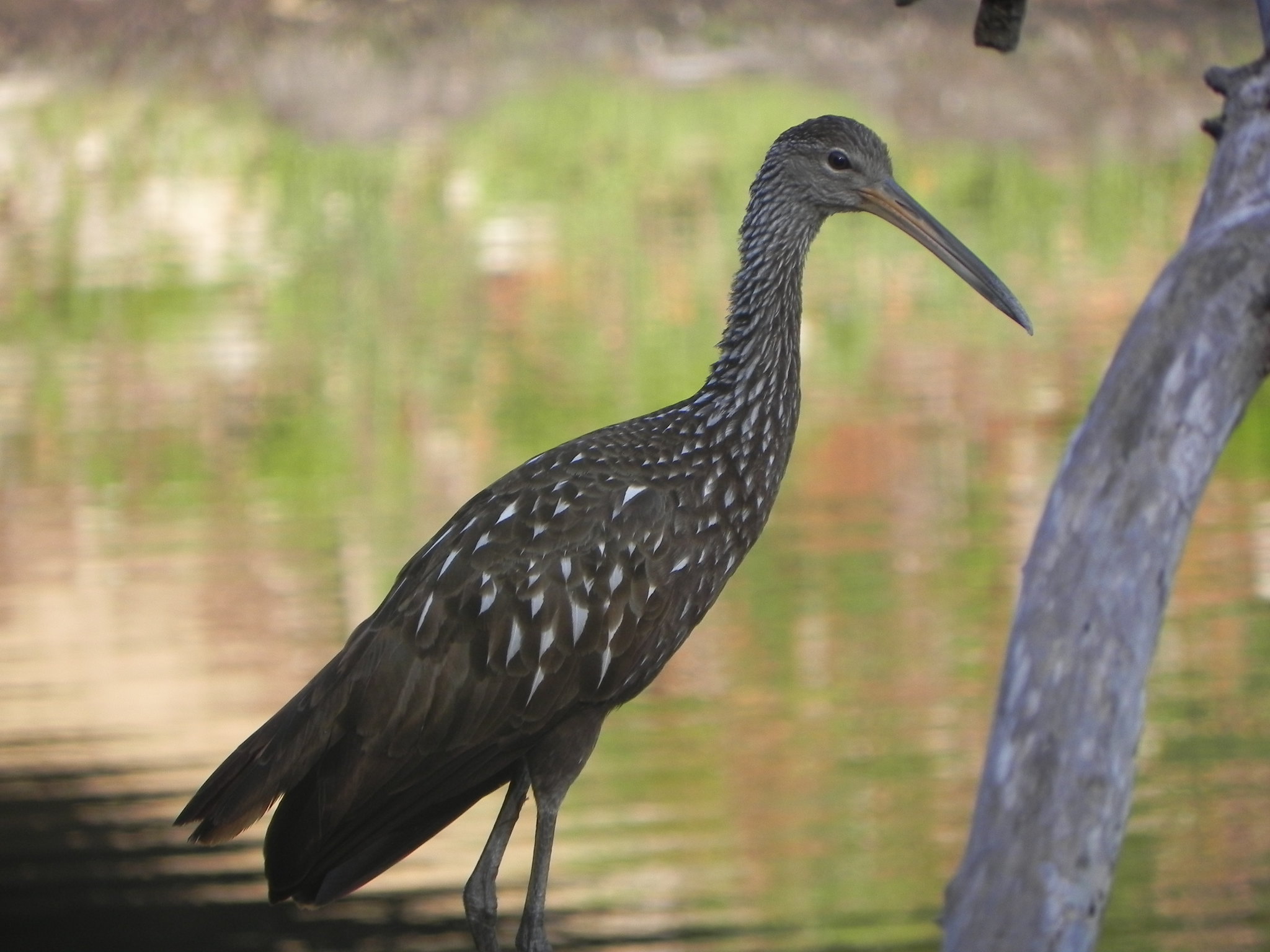
Bare-Throated Tiger Heron
Order: Pelecaniformes
Family: Ardeidae
Species: Tigrisoma mexicanum
Its name derives from its physical appearance rather than any tiger-like ferocity. In frequent sightings you will find them standing quietly in the weeds or brushes, with its bills pointed straight up and swaying with any surrounding vegetation, trying to look like plants. Very confident are they when assuming this attitude, when they can be approached closely. Its voice when flushed may give a deep and throaty "woh, woh, woh"… In breeding season, especially at dusk or at night, the Bare-Throated Tiger Heron gives off a far carrying, deep, hoarse grunt or roar, at times paired "ohrrr, ohrrr, ohrrr"… Its habitat is varied; freshwater habitats and mangroves, typically with wooded edges or trees nearby but rarely inside heavy forest. Usually it is a solitary bird, but several may gather in small areas, often in fairly open situations at marsh edges. If it is disturbed, it takes flight heavily and usually perches in trees. It hunts by waiting or slow wading. It is partly nocturnal. Its nests are in trees and its eggs are greenish white, rarely flecked brown.
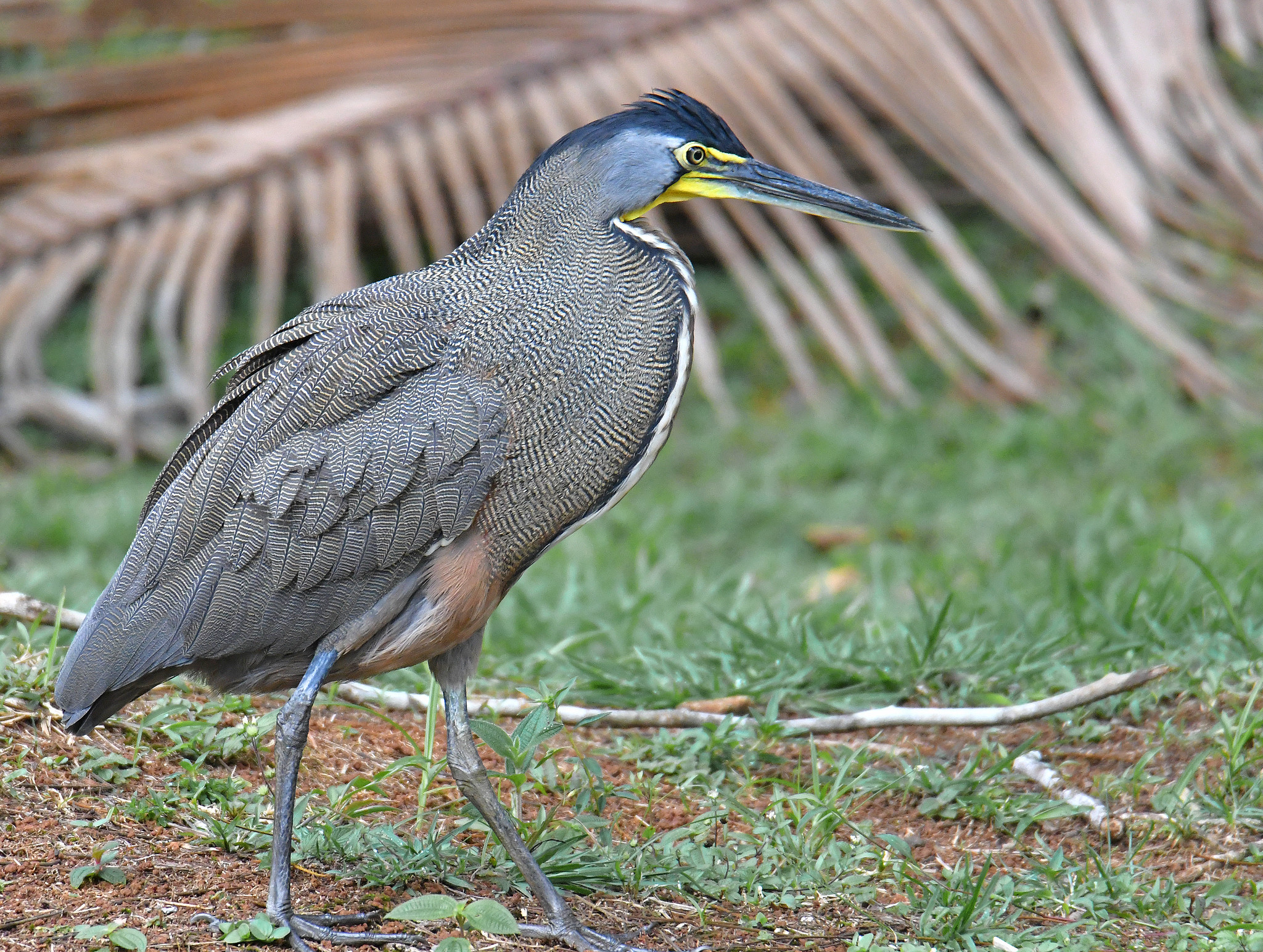
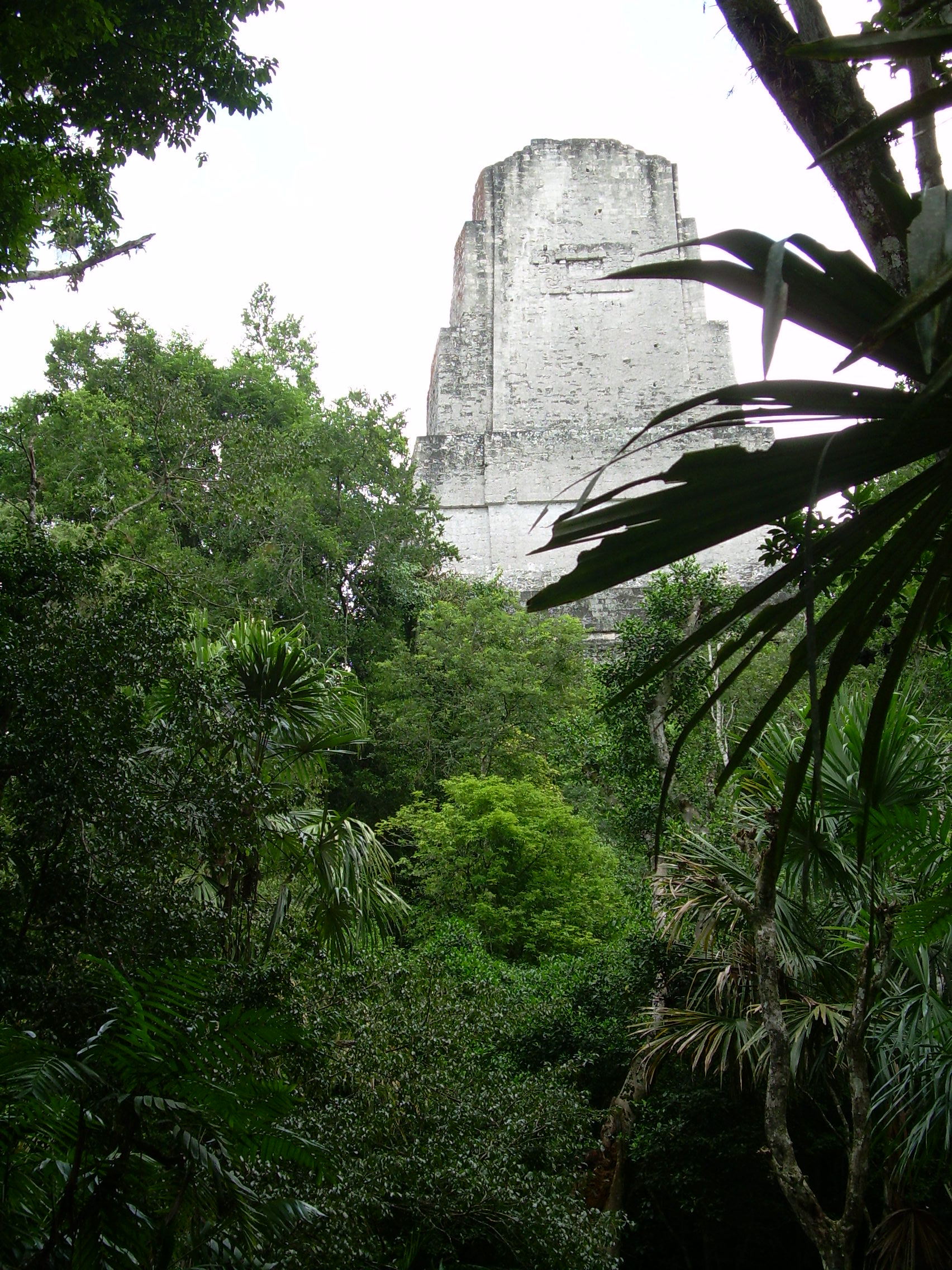
The crest of Temple III in the TIKAL National Park in Guatemala, surrounded by a lush greenery, teeming with wildlife.

We hope you will enjoy www.tikalpark.com and its Spanish version www.parque-tikal.com Write us at info@mayaworld.org to organize your visit to Guatemala's magic natural and cultural paradise, the heart of the Maya World


| Home | About | Lodging | Plantation Tours | Birding | Tours | e-mail us | References | Site Map |